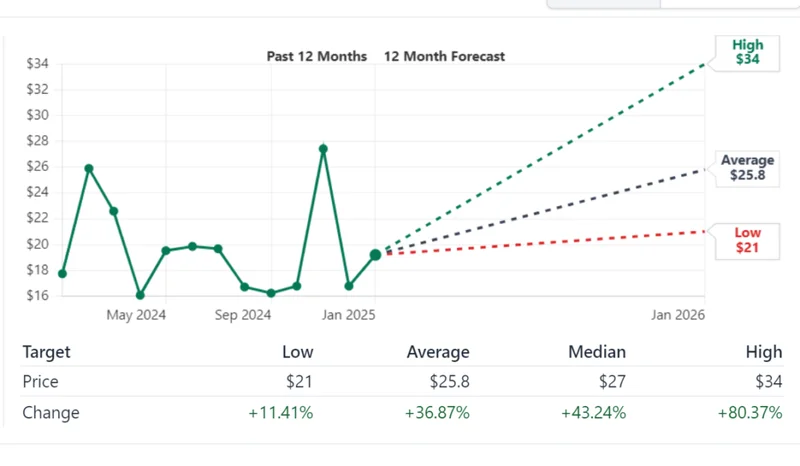The Two Faces of Marathon Digital: Why the Market Can't Decide on MARA
In the first week of October 2025, Marathon Digital Holdings looked like it was coiled for a massive breakout. The company reported mining 736 Bitcoin in September, its treasury swelling to an impressive 52,850 BTC. The stock chart was painting a textbook "cup-and-handle," a pattern that has technical analysts salivating over a potential surge toward $26 or even $28. The relative strength index, a key momentum indicator, was a healthy 65. Everything, from production numbers to chart formations, was screaming "buy," a sentiment captured in reports like MARA Stock Charts Cup-And-Handle Breakout As Marathon Digital Mines 736 Bitcoin In September.
Just one week later, on October 10th, the stock was in a tailspin, closing down nearly 8%. The narrative had flipped from a bullish breakout to a volatile sell-off, punctuated by whispers of insider trading and widespread investor uncertainty, summing up what some called The Unpredictable Ride of MARA’s Stock. The stock that hit a high of $22 was suddenly struggling to hold $18.
This is the central paradox of Marathon Digital (NASDAQ: MARA). It's a company with two completely different stories, depending on which data set you choose to believe. One story is about operational growth in a booming asset class. The other is a far more convoluted tale hidden within financial statements that seem to defy basic arithmetic. The market's violent indecision isn't irrational; it's a direct reflection of a company whose books are, to put it mildly, a puzzle. So, which story is real?
Deconstructing the Financial Mirage
To understand the disconnect, you have to ignore the technical charts and the production headlines for a moment and look at the company’s financials. And this is the part of the report that I find genuinely puzzling. The documents present an EBIT margin of 157.6%. For any standard business, an earnings margin over 100% is a mathematical impossibility; you cannot earn more in profit than you generate in total revenue from your core operations. This single data point is a massive red flag that the headline numbers are being distorted by something else entirely.
The culprit is almost certainly the mark-to-market accounting of Marathon’s vast Bitcoin holdings. With a treasury of over 50,000 BTC—52,850 BTC to be exact—any significant rise in Bitcoin's price creates enormous unrealized gains on the balance sheet. These paper gains flow through the income statement, creating staggering figures like a reported EBIT of $1.02 billion on total revenue of just $238.48 million. This isn't profit from efficiently mining crypto; it's the financial equivalent of declaring your house's appreciation as annual income. It looks great on paper, but you can't use it to pay the electricity bill.
What happens when we strip away this accounting noise? The picture becomes far less rosy. The same report showing fantastical margins also reveals a current ratio of 0.5. This metric (current assets divided by current liabilities) is a basic test of a company's ability to cover its short-term debts. A ratio below 1.0 suggests potential liquidity concerns, and 0.5 is genuinely alarming for a company of this scale. It implies that for every dollar of debt due in the next year, Marathon only has 50 cents in liquid assets to cover it. How can a company be simultaneously reporting billion-dollar earnings while also flashing signs of a cash crunch?

This is the core conflict. The income statement tells a story of explosive profitability, driven entirely by the price of an external asset. The balance sheet, however, hints at a capital-intensive, high-cost mining operation that may be struggling with its day-to-day financial obligations. The market is trying to price two different entities: a high-risk crypto holding company and an industrial mining business. The problem is that they are tangled together in one stock.
The Operational Reality vs. The Paper Gains
The bullish narrative for MARA is built on a simple premise: more miners plus a higher Bitcoin price equals a higher stock price. And operationally, the company is delivering. Its September output was solid, and its position as the second-largest corporate holder of Bitcoin (behind the much larger MicroStrategy) gives it immense leverage to the crypto market. When Bitcoin rockets to $123,000, as one analyst forecast suggests, MARA’s treasury value would explode, and its stock would almost certainly follow.
But this is an investment in a proxy, not a business. The fundamental question is whether Marathon’s core operation—the actual mining of Bitcoin—is a sustainably profitable enterprise on its own. The financials make this question almost impossible to answer clearly. We see operating expenses of $357.06 million against revenue of $238.48 million, which suggests a significant operating loss before any accounting adjustments. The company even noted it was a "net seller" of Bitcoin during September, likely to cover some of these immense operational costs (primarily energy and hardware depreciation).
This creates a strange loop. The company mines Bitcoin, an energy-intensive and expensive process, and then must sell some of that newly mined coin to pay for the costs of mining it in the first place. Its ability to hold onto its treasury, the very thing driving its spectacular paper profits, is dependent on its ability to fund its money-losing operations. It’s like owning a fleet of gold-plated trucks that cost more in fuel and maintenance than the value of the goods they deliver, all while hoping the price of gold itself goes up enough to make you look profitable.
The market volatility, then, makes perfect sense. The bulls are looking at the 52,850 BTC on the balance sheet and the bullish crypto macro-environment. The bears are looking at the negative operating cash flow and the precarious 0.5 current ratio. The failure of the cup-and-handle pattern wasn't just random market noise; it was the moment the market began to weigh the operational risks more heavily than the asset appreciation.
A Balance Sheet at War With Itself
Ultimately, Marathon Digital isn't a mining company in the traditional sense. It's a highly leveraged, publicly traded Bitcoin fund that happens to have a mining operation attached to it. The financials are a reflection of this conflicted identity. The income statement reflects the speculative value of its treasury, while the balance sheet and cash flow statements reveal the brutal economics of its industrial operations. Investors aren't just buying a piece of a Bitcoin miner; they are underwriting a high-cost operation in the hopes that its crypto holdings will appreciate faster than its operational expenses burn cash. The recent price action suggests the market is finally starting to do the math on that risky proposition.









